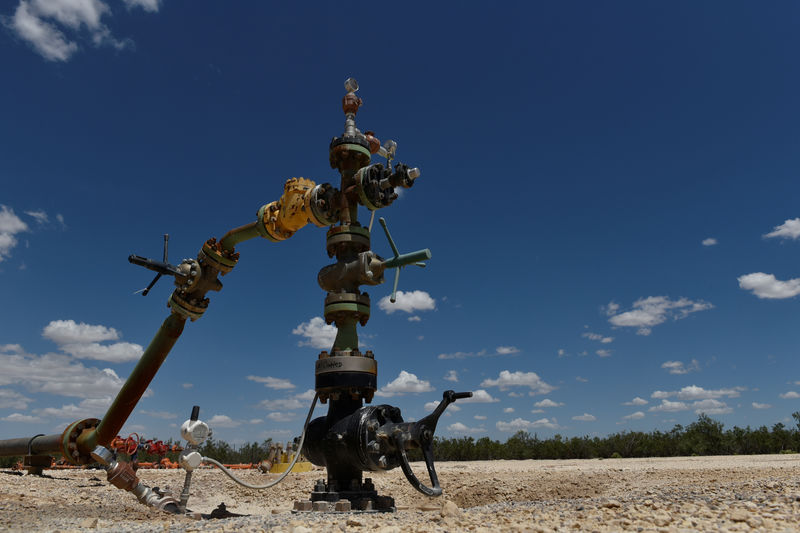By Aaron Sheldrick
TOKYO (Reuters) - Oil prices rose for a fifth day on Wednesday, buoyed by a bigger than expected drop in U.S. inventories and as investors awaited a widely expected cut in interest rates by the Federal Reserve, the first in more than 10 years.
Brent crude (LCOc1) was up 33 cents, or 0.5%, at $65.05 a barrel by 0044 GMT.
U.S. West Texas Intermediate crude (CLc1) gained 28 cents, or 0.5%, to $58.33 a barrel.
For the month, however, both contracts were set to ease due to ongoing worries about oil demand, with Brent heading for a decline of about 2.3% and WTI down slightly.
Still U.S. inventories have been falling in recent weeks suggesting demand concerns are overstated.
Stocks fell again last week, along with gasoline and distillate inventories, data from industry group the American Petroleum Institute (API) showed on Tuesday.
"There is a definitive seasonal trend emerging as inventory draws continue to beat analysts' expectations by a mile suggesting analysts have grossly underestimated consumption and the breadth of seasonal demand this year," VM Markets Pte said in a note.
Crude inventories fell by 6 million barrels in the week ended July 26 to 443 million barrels, compared with analysts' expectations in a Reuters poll for a decrease of 2.6 million barrels, the API dta showed.
Gasoline stocks fell by 3.1 million barrels, compared with analysts' expectations for a 1.4 million-barrel decline.
Distillate fuels stockpiles, which include diesel and heating oil, fell by 890,000 barrels, compared with expectations for a 1 million-barrel gain, the API data showed.
If confirmed by U.S. government data on Wednesday morning, the decline would put crude stocks down for a seventh week in a row. That would be longest stretch since they fell for a record 10 consecutive weeks ending in January 2018, according to Refinitiv data going back to 1982.
Total crude stockpiles, however, would still be about 3% higher than the average for the five years between 2014-2018 average for this time of year.

Central bankers in the United States began their two-day meeting on Tuesday and were expected to lower borrowing costs for the first time since the depths of the financial crisis more than a decade ago.